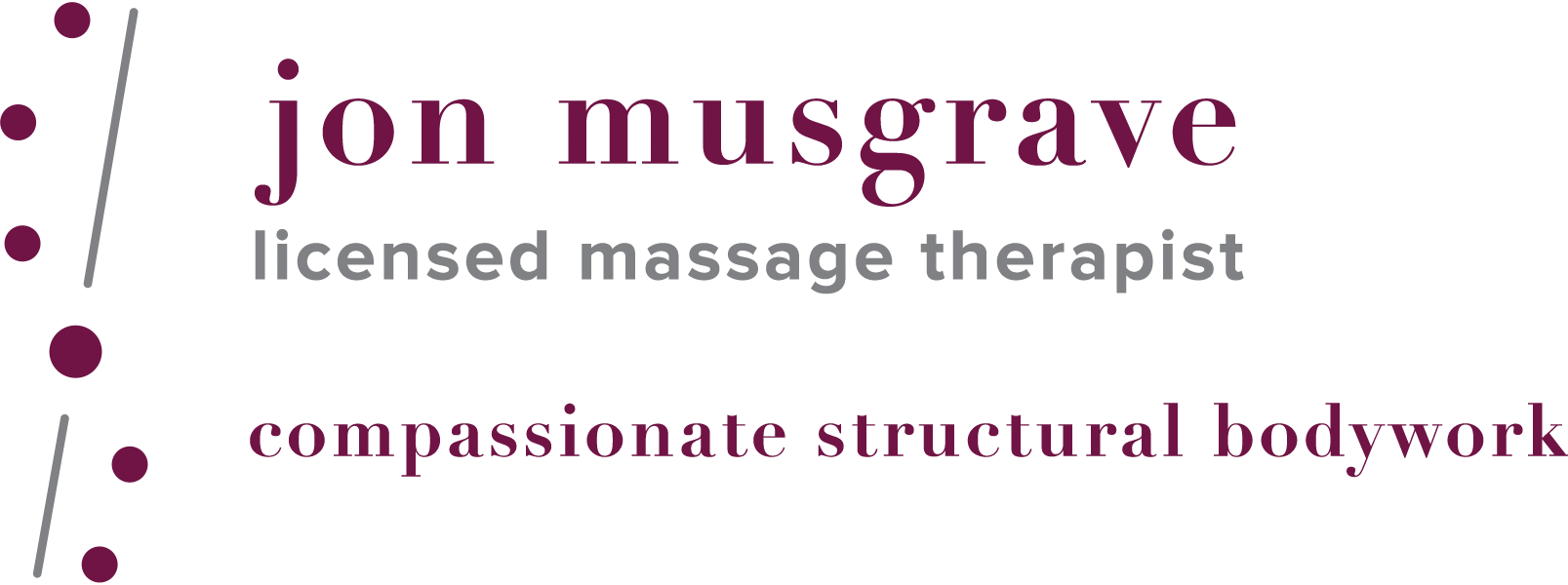No Pain, No Gain: Origins of the Myth
In my last blog post, I wrote about why I believe massage should be a pain free endeavor. Now I’d like to turn to the “No Pain, No Gain” myth, because I think it’s interesting how ingrained it’s become. I hear from my clients regularly that the stroke I’m doing is painful and they say, “but it’s okay, I know if has to be painful for it to work.” But this simply isn’t true, and I wanted to understand better why some many people think it is.
To be quite honest, until today I had never done much homework on the "No Pain, No Gain" mantra. But a quick jump over to Wikipedia points to a (for me) surprising source for both the "No Pain, No Gain" and "Feel the Burn" mantras: Jane Fonda's series of workout videos from the 1980s. But below that it points to several older adages that all have the same basic point: without putting yourself through some kind of pain, you'll never reap any rewards.
Now, I would never argue with that concept in terms of growing or making something happen: you can only get things done by putting in a lot of work, and some of that work is likely to be something you don’t especially like. I disagree, however, with this logic when it comes to restorative work for the body (like massage). Either way, the concept of “No Pain, No Gain” comes from the fitness industry, where it has increasingly come to mean that pain is not just expected but required if you want to get anywhere and that you should push through any and all pain you feel in your body if you want to see any results.
So What's the Problem?
Well, there are several. The first thing to think about here is that not all unpleasant sensations in our body are painful. During a massage, not all sensations are going to be 100% pleasurable. I like to use the term “therapeutic discomfort” to distinguish unpleasant but ultimately helpful sensations from outright pain. The reason to make that distinction is that the body’s reaction to these sensations is different. With therapeutic discomfort, the body is still open to receiving the work and many people find it oddly pleasurable even though it is not the kind of thing you’d want to experience all of the time. Pain has the opposite effect; the body withdrawals from the work and the mind pulls away from it strongly.
The problem with the "No Pain, No Gain" adage in regards to fitness is that it teaches us to think of all uncomfortable sensations as pain. Discomfort, fatigue, and the "burn" are all appropriate things to push through in a work out—and all are different than true pain. Though they can be similar, and sometimes it's hard in the moment to determine what is pain and what isn't. A good rule of thumb is that the burn should fade after you've stopped doing the work, and discomfort and soreness after the work should not last more than 48 hours. If the burn doesn’t fade or you still experience discomfort after 48 hours, you're probably working through pain and need to shift what you're doing. It’s also important to avoid actions that cause a stabbing kind of pain, which is never helpful, especially if it occurs at or around your joints.
In addition to categorizing all unpleasant sensations as pain, the “No Pain, No Gain” philosophy also teaches you to actively ignore what your body is telling you. This is true both during a massage and a work-out. Pain is your body's way of telling your mind that something is wrong. The formula is pretty basic: BODY PAIN=PROBLEM. And so if you work through the pain anyway, you're ignoring the part of your body that is telling you to STOP! Not only can this lead to injury, it reinforces the larger societal pattern that places a significantly higher value on the mind than on the body. It asks you to ignore those pesky sensations coming from the body and to power through anyway. By stopping this cycle and actually LISTENING to the pain you're experiencing, and making adjustments so you are no longer feeling pain, you can become more embodied.
I hope that this post was helpful in reframing your ideas about pain and its necessity in the workout or restorative process. As always, please feel free to post comments or questions below. Cheers, Jon

